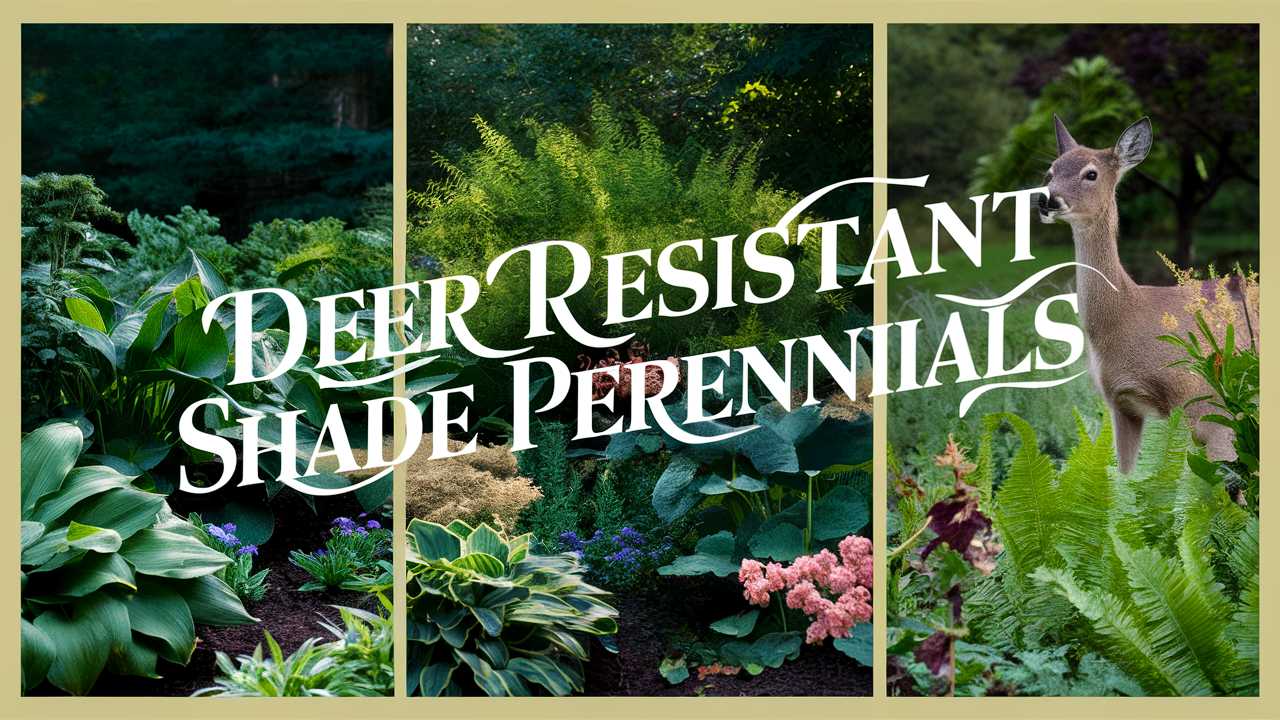In this guide, we’ll explore a variety of deer-resistant shade perennials, providing detailed insights and practical tips for each.
Astilbe

Astilbe is a stunning addition to any shaded garden, celebrated for its feathery plumes of flowers that come in shades of pink, red, white, and lavender. These perennial plants thrive in moist, shady areas, making them ideal for woodland gardens or spots with dappled sunlight.
While astilbe flourishes in rich, well-drained soil, it’s also fairly resilient and can tolerate a range of conditions. They require minimal maintenance once established, requiring only a division every few years to prevent overcrowding. One of the best features of astilbe is its ability to attract pollinators while remaining unappealing to deer, thanks to its fibrous foliage and sometimes bitter taste.
In terms of design, astilbe pairs beautifully with ferns and hostas, adding layers of texture and color to your shaded garden space. As they bloom, their plume-like flowers create a soft, romantic atmosphere that can transform any nook into a serene retreat.
Bleeding Heart
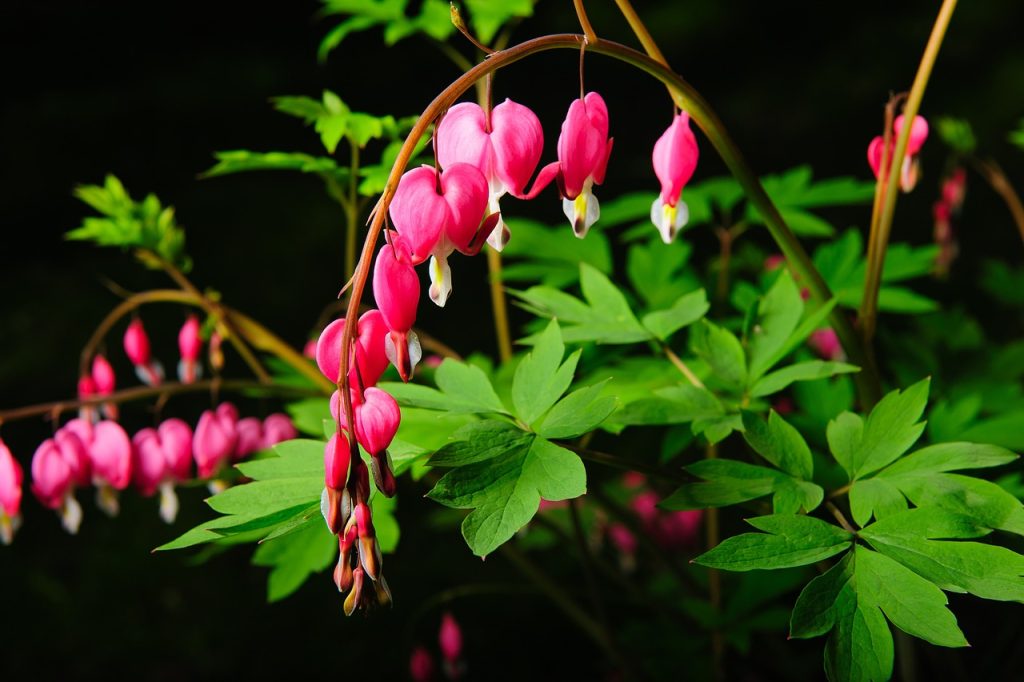
The bleeding heart (Dicentra spectabilis) is a whimsical perennial that enchants with its unique, heart-shaped blossoms. Available in pink and white varieties, the flowers dangle delicately from arching stems, reminiscent of a charming fairy tale garden. Bleeding hearts prefer partly shaded areas with well-drained, rich soil, and they thrive in cooler climates.
Beyond their aesthetic appeal, bleeding hearts are resilient when it comes to deer. The foliage is toxic to deer, making them less likely to munch on this perennial. In your garden, bleeding hearts make an excellent companion to early-spring bloomers, providing a continuous display of vibrant color.
As they require minimal upkeep, maintaining bleeding hearts only involves removing spent flowers and leaves in the fall. Their low-maintenance nature and enchanting charm make them a must-have for any deer-conscious gardener.
Ferns
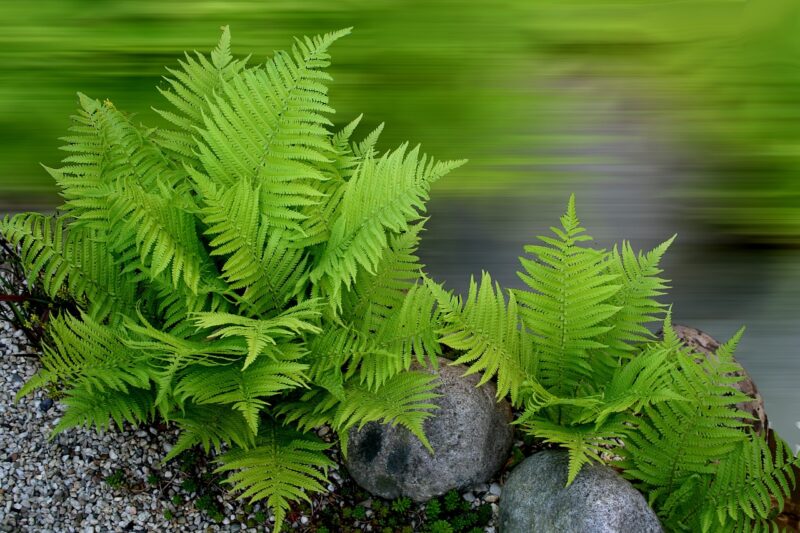
Ferns are timeless shade-loving perennials that bring an element of elegance and tranquility to any garden. With a vast array of species available, from the delicate maidenhair fern to the robust ostrich fern, any gardener can find a variety to suit their space. Ferns thrive in moist, shady environments and can be a fantastic way to fill in those tricky shaded spots where other plants may struggle.
One of the reasons ferns are often overlooked is their deer-resistant nature; deer tend to avoid these plants due to their tough, fibrous texture and sometimes unpalatable leaves. Furthermore, ferns contribute to the biodiversity of your garden, serving as a habitat for local insects and wildlife.
Ferns can be used as ground cover, providing a lush carpet effect that pairs wonderfully with flowering perennials like astilbe and bleeding heart. Care is fairly simple; just ensure they have consistent moisture and a bit of leaf litter can serve as mulch to retain moisture.
Coral Bells
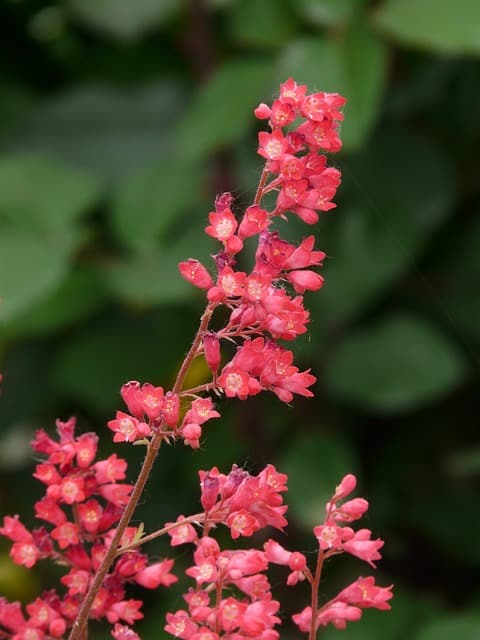
With their striking foliage, coral bells (Heuchera spp.) are not just beautiful; they also make great additions to any shade garden. The leaves come in a stunning variety of colors including deep purple, bright lime green, and silvery tones, adding year-round interest to your landscape. This variety not only has aesthetic appeal but is also a terrific deer deterrent as most animals avoid plants with strong scents or unusual textures.
Coral bells thrive in well-drained, fertile soil and prefer a bit of afternoon shade to flourish. Their flower spikes, which bloom in late spring to summer, attract hummingbirds and other pollinators, brightening your garden with life.
These perennials are also rather easy to propagate; simply divide existing plants as needed. Pairing coral bells with a variety of shade plants, such as hostas or ferns, creates depth and visual interest in your garden.
Japanese Forest Grass
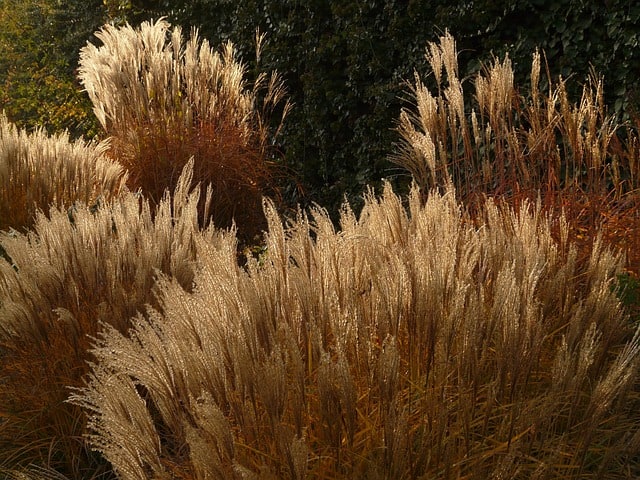
Japanese forest grass (Hakonechloa macra) is a graceful and elegant foliage plant that thrives beautifully in shaded areas. With its cascading, arching leaves, this grass adds a soft, flowing texture that can transform the garden’s aesthetic. This perennial prefers moist, well-drained soil and is often happiest in dappled sunlight under the shade of larger trees or shrubs.
When it comes to deer resistance, Japanese forest grass has a reputation for being largely ignored by these animals. Its distinct taste and fibrous structure make it unappealing to herbivores, allowing it to create serene spaces without the worry of being nibbled away.
Use Japanese forest grass to create a soft border or to fill in gaps where other plants may not flourish. Its graceful movement in the breeze adds an element of tranquility and is perfect for meditation or relaxation spots.
Toad Lily
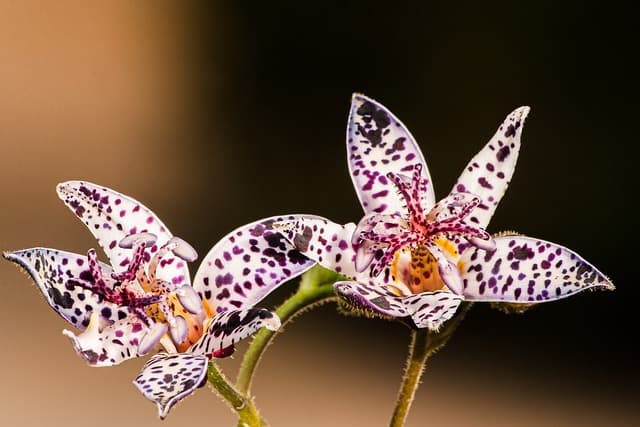
Toad lily (Tricyrtis spp.) may not be as well-known as some of the more traditional perennials, but its unique, spotted flowers are nothing short of intriguing. Flowering in late summer to early fall, toad lilies provide color when many other plants have faded, making them invaluable in the garden design.
These perennials prefer a shaded, moist environment and are well-suited for woodland gardens. Deer typically avoid toad lilies, which have a somewhat bitter taste. They blend beautifully in a garden filled with hostas, ferns, and other shade-loving companions.
Toad lilies prefer rich, loamy soil and require regular watering, especially during dry spells. They only require minimal care as the growing season comes to a close; simply cut back the faded foliage to ensure robust growth for the next season.
Solomon’s Seal
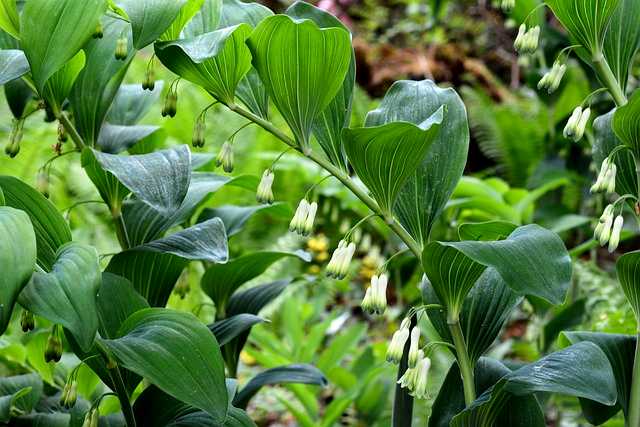
Solomon’s seal (Polygonatum spp.) is a delectable perennial with arching stems adorned with dainty, bell-shaped flowers. Preferring shade, this plant is often found in woodland settings and can thrive in poor soil, making it an adaptable choice for various garden spaces.
The foliage of Solomon’s seal is also known to be unappealing to deer, which tend to pass by these perennial treasures. Beyond its deer-resistant nature, Solomon’s seal provides elegant texture and height variation in shaded areas.
Caring for Solomon’s seal involves minimal effort; simply ensure they have adequate moisture. To promote healthy growth, you can remove spent flowers and brown leaves during the fall, but overall, this perennial is easy to manage.
Tickseed
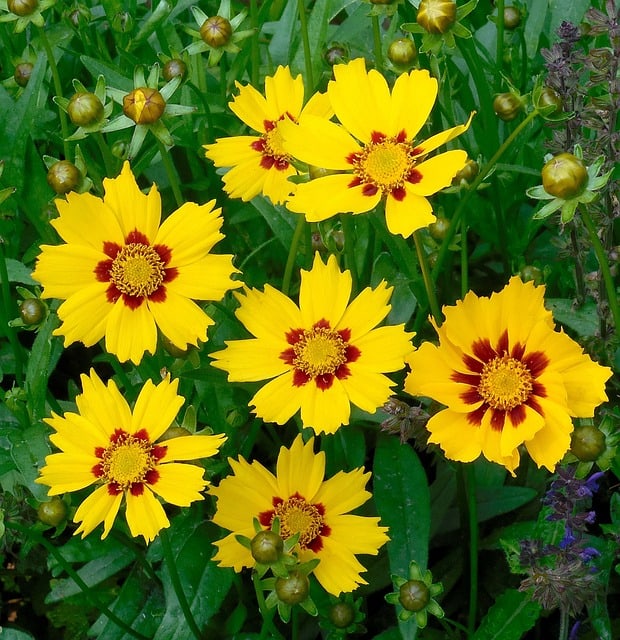
Tickseed (Coreopsis spp.) is typically known for its sunny dispositions and bright flowers, but certain species thrive beautifully in partial shade. Boasting cheerful blooms in shades of yellow and gold, tickseed is loved by pollinators. Surprisingly, deer seem to steer clear of this perennial due to its strong fragrant foliage.
Tickseed thrives in fertile, well-drained soil and adds a splash of color wherever it’s planted. These adaptable plants flourish with little maintenance and can often self-seed, providing a natural and effortless approach to garden expansion.
Incorporate tickseed into your garden as borders or mass plantings for an eye-catching display, especially when paired with darker foliage such as ferns or ajuga.
Lungwort

Lungwort (Pulmonaria spp.) is a stunning perennial known for its early spring blooms and attractive foliage. Displaying an array of spotted and variegated leaves, lungwort brings texture and color to shaded areas.
These plants are particularly appealing to gardeners since they often bloom before trees fully leaf out, providing essential nectar for early pollinators. However, deer generally find lungwort unpalatable, opting for other blooms instead.
Lungwort prefers moist, well-drained soil and can thrive in dry shade once established. Pruning spent flowers helps keep this perennial looking fresh, and it can easily be divided every few years for propagation. Using lungwort as a ground cover allows you to combat weeds while adding visual interest.
Columbine
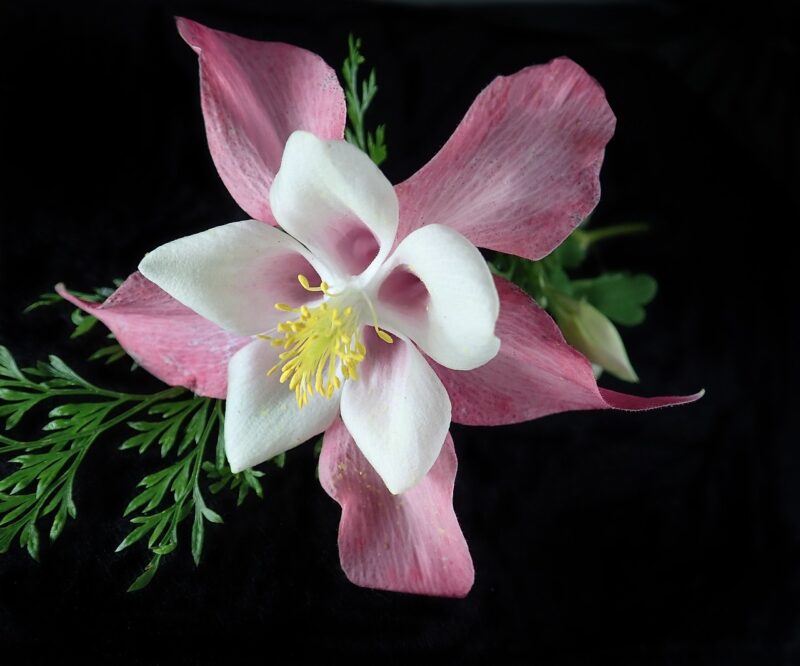
Columbine (Aquilegia spp.) is a graceful perennial that stands out with its intricate blooms, often resembling little lanterns. These delightful flowers attract hummingbirds, making them a favorite in pollinator gardens. They appreciate dappled sunlight but can also thrive in full shade, making them quite versatile.
Deer tend to avoid columbine due to their toxic leaves, allowing these flowers to flourish without interruption. While columbines do not require much maintenance, deadheading spent flowers will promote additional blooms throughout the summer.
Plant columbine in clusters for maximum impact or intersperse them among ferns and hostas for a dynamic display of color and texture. Their unique flower shapes create an enchanting atmosphere in shaded garden areas.
Hellebore
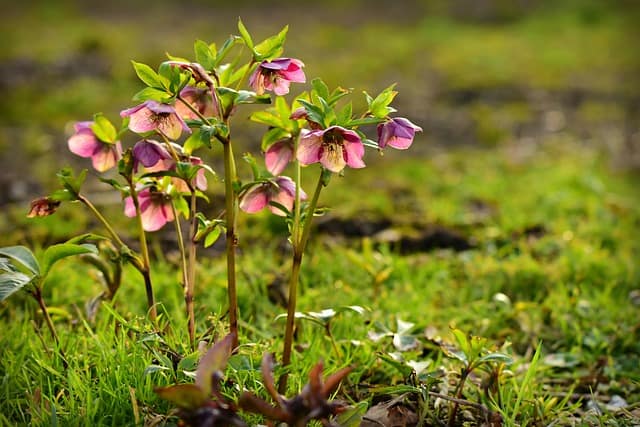
Hellebores (Helleborus spp.) are among the earliest perennials to bloom, providing you with stunning blooms even while the frost still clings to the ground. Known for their unique, sometimes downward-facing flowers and thick, leathery foliage, hellebores thrive in shaded areas and can tolerate a range of soil conditions.
Their bitter-tasting leaves deter deer, ensuring that these early bloomers remain intact. Hellebores require little maintenance aside from occasional deadheading and a light trim after flowering.
Incorporating hellebores into your garden enhances the transition between seasons. Their subtle beauty makes them perfect companions for spring bulbs and other spring-flowering perennials.
Golden Shrimp Plant
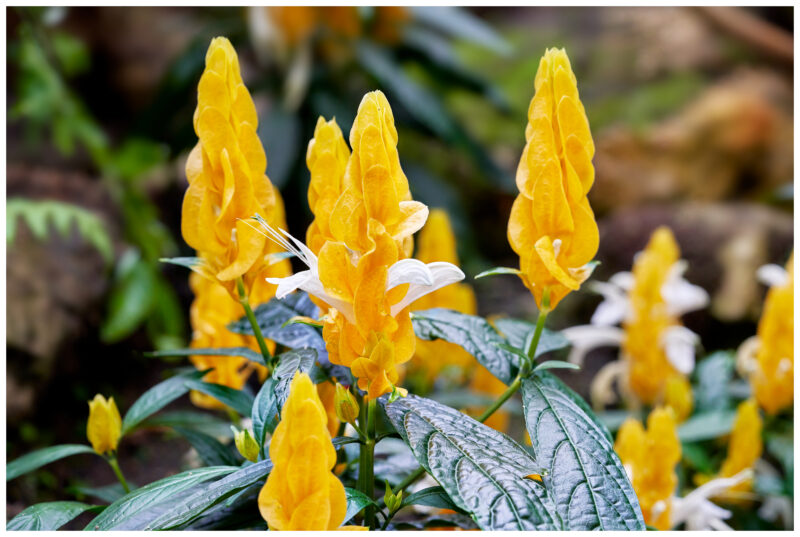
The golden shrimp plant (Pachystachys lutea) adds a tropical touch to shaded areas. With its unique yellow bracts and white flowers, this perennial stands out in shaded gardens. While it prefers tropical climates, it can adapt to cooler growing conditions as an annual or semi-perennial.
Interestingly, deer turn up their noses at the golden shrimp plant due to its somewhat bitter flavor. These plants thrive in well-drained, rich soil and require regular watering to establish.
The golden shrimp plant suits both container gardens and as a striking bush in a landscaped area. Pair it with other tropical plants for a Mediterranean garden feel, or let it stand alone for a focal point.
Hummingbird Sage
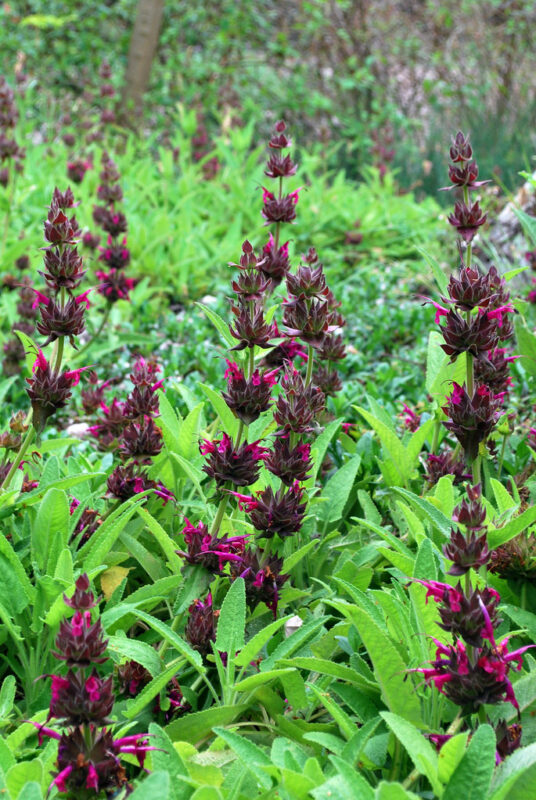
Hummingbird sage (Salvia spathacea) offers stunning spires of tubular purple flowers that can attract dazzling hummingbirds to your garden. Thriving in sun to partial shade, this perennial may also tolerate some drought once established.
This salvia is generally avoided by deer, which is fantastic for those looking to maintain their floral display. They prefer well-drained, fertile soil but will adjust to different soil types, demonstrating their adaptability.
Plant hummingbird sage among your existing perennials to add vibrant pops of purple while also encouraging visits from pollinators. Due to their resistance to pests and their stunning blooms, these plants are fantastic additions to a mixed border.
Wild Ginger
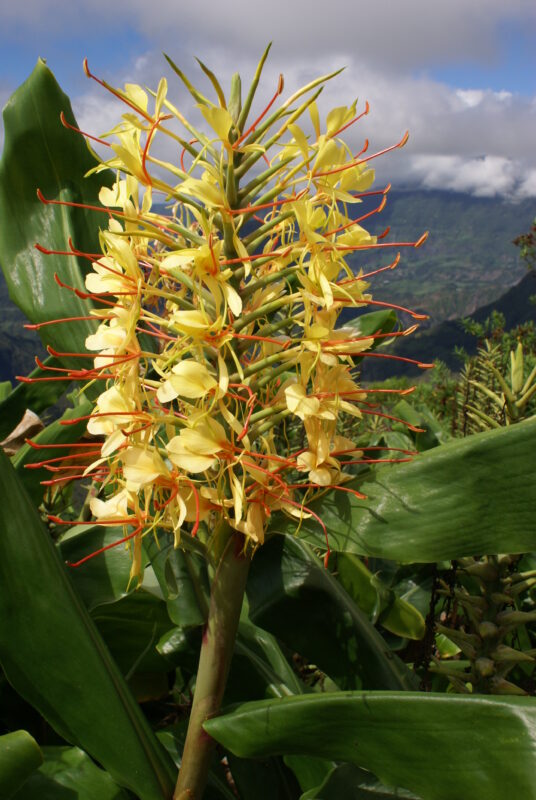
Wild ginger (Asarum canadense) acts as a delightful groundcover option for shaded areas. Its heart-shaped leaves and small, inconspicuous flowers provide earthiness and charm to any woodland garden.
Deer tend to pass on wild ginger due to its thick texture and unappealing taste, allowing the plant to thrive undisturbed. It flourishes in rich, moist soil and can tolerate a range of conditions, making it a versatile choice.
Employ wild ginger as a low-maintenance ground cover or as a filler between larger shade-loving perennials. Its adaptability and unique foliage work well in naturalized areas and may even be helpful in erosion control.
Ajuga
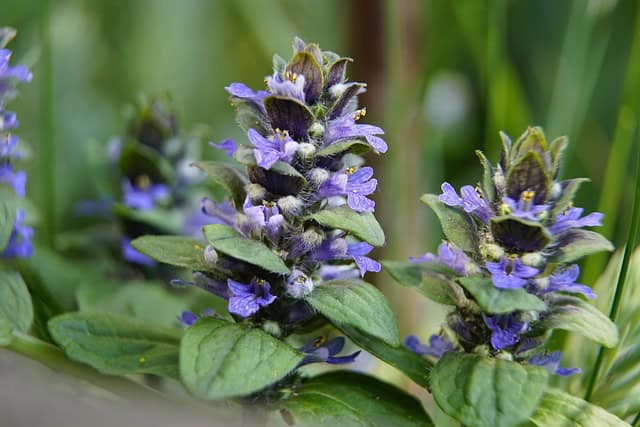
Ajuga, or bugleweed, is an excellent ground cover option known for its vibrant foliage and spikes of blue flowers. It spreads rapidly, making it a good choice for filling gaps in shaded areas of your garden.
Aside from its aesthetic appeal, ajuga is considered deer-resistant due to its bitter taste. This perennial thrives in moist, well-drained soil and prefers partial to full shade.
Integrated into your garden design, ajuga can add a splash of color along pathways or as a lush carpet beneath trees. It’s easy to maintain; simply control its spread to ensure it remains contained.
Spiderwort
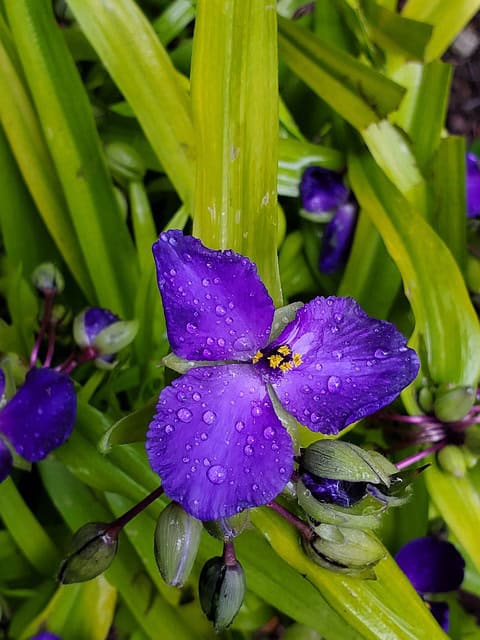
Spiderwort (Tradescantia spp.) is a graceful and resilient perennial known for its vibrant blue, purple, or white blooms that appear in spiky clusters. It thrives in moist, well-drained soil and can flourish in both sun and shade, making it adaptable to various garden layouts.
Deer typically avoid spiderwort due to its tough texture and fibrous leaves. Once established, spiderwort requires minimal maintenance, needing only to have faded flowers trimmed back.
This perennial is perfect for borders or planted in clusters for visual impact. Its ability to thrive in less-than-ideal soil conditions makes it a gardener’s ally, particularly in shaded areas where other plants may struggle.
Foxglove
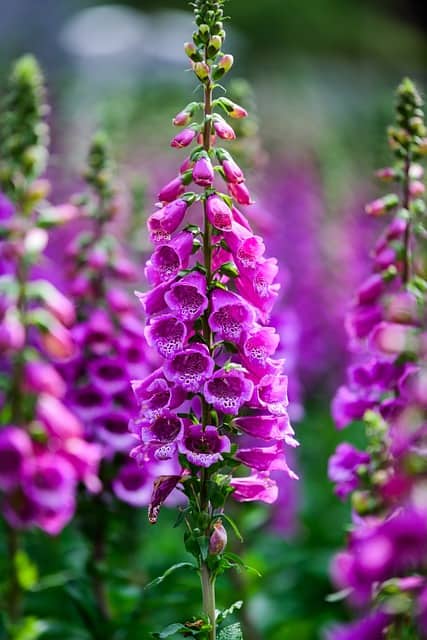
Foxglove (Digitalis spp.) is renowned for its tall, elegant spikes adorned with tubular blossoms. These plants thrive in partially shaded areas, where they can receive some sunlight without being scorched.
Foxglove is often avoided by deer due to its toxicity, allowing it to flourish in tranquility. Gardeners enjoy this perennial for its dramatic presence and ability to produce blooms in a variety of colors, including purple, pink, and white.
When designating a spot for foxglove, consider planting them in clusters to create a striking garden focal point. They pair beautifully with other perennials while infusing a touch of whimsy into the shaded corners of your landscape.
Snakeroot
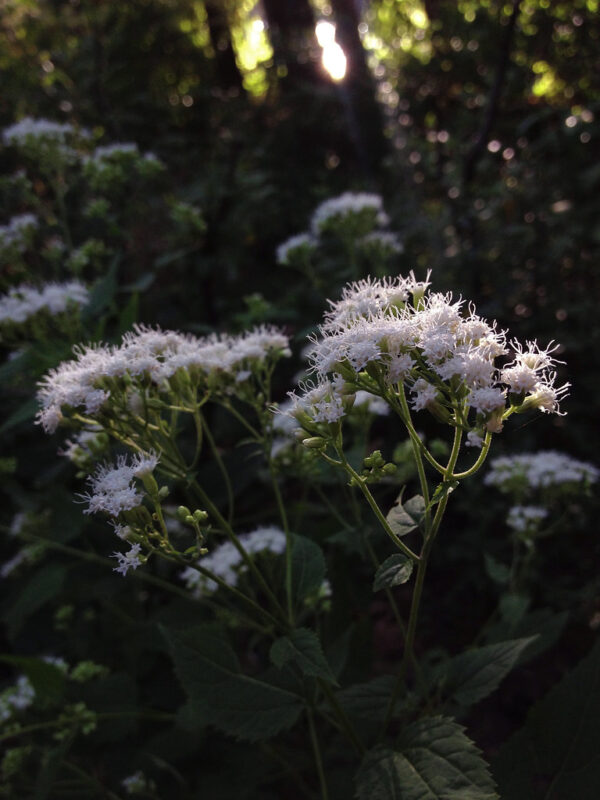
Snakeroot (Ageratina altissima) is a beautiful deer-resistant perennial boasting dense, white flower clusters. With its ability to thrive in shade and its adaptability to different soil types, snakeroot proves a practical option for many garden situations.
Typically, deer shy away from snakeroot due to its unpalatable taste and toxins. This low-maintenance perennial flourishes in moist, shady locations, making it an ideal underplanting choice in woodland settings.
The delicate flower clusters attract beneficial pollinators, enhancing your garden’s biodiversity. Use snakeroot to fill in spaces or as a border plant, and let its simplicity shine amidst the more colorful companions.
Wintergreen
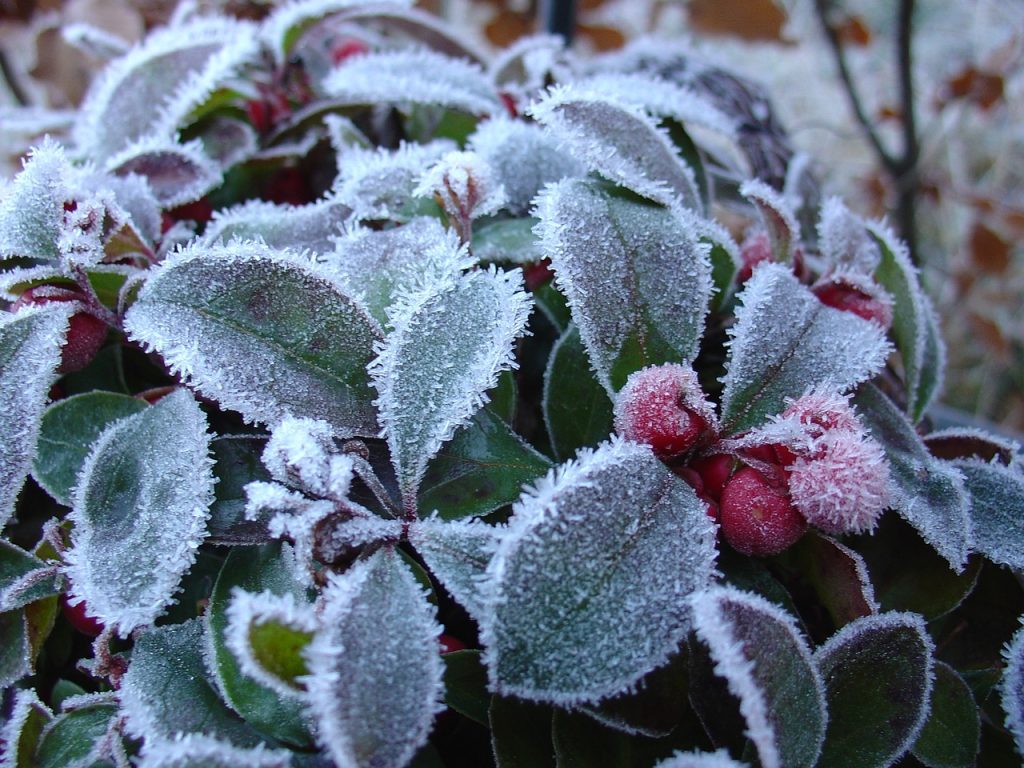
Wintergreen (Gaultheria procumbens) is a delightful evergreen perennial that thrives in shade and boasts glossy green leaves and vibrant red berries. Perfect for adding visual interest throughout the year, wintergreen is a great choice for woodland and shaded gardens.
Deer often reject wintergreen due to its aromatic leaves, which create an unappealing taste for herbivores. This perennial prefers moist, well-drained acidic soil and can successfully spread, providing rich ground cover over time.
Incorporate wintergreen to create dynamic contrasts with other shade-loving plants, while enjoying its appealing scent and texture. Its berries also add a playful element to the winter landscape.
Brunnera
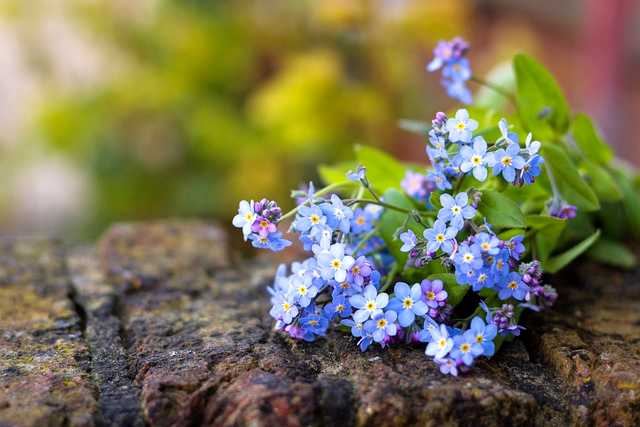
Brunnera (Brunnera macrophylla), commonly known as Siberian bugloss, is an enchanting perennial that dazzles with its stunning blue forget-me-not flowers appearing in early spring. This delightful plant thrives in partial to full shade and, like many of its companions, is largely ignored by deer.
Brunnera adapts well to various soil conditions and has robust leaves that can serve as excellent ground cover. Its engaging foliage, often marked with silver spots or variegation, adds year-round interest to shaded areas.
As a resilient perennial, brunnera requires minimal care; simply remove spent leaves and flowers to encourage new growth. Pair it with ferns and shade-tolerant annuals for a layered, vibrant landscape.
Lamium (Dead Nettles)
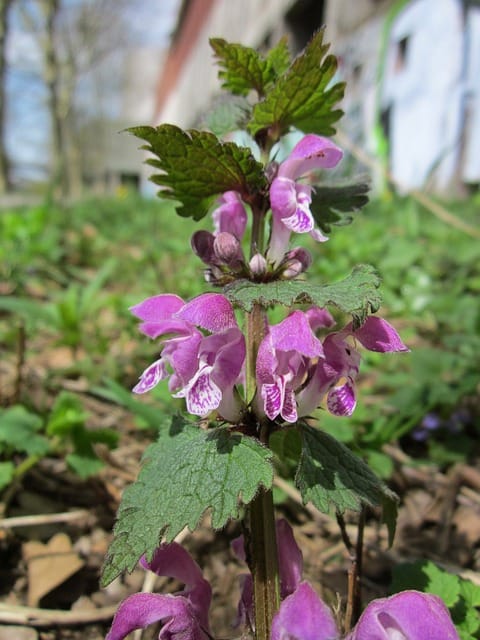
Lamium, commonly known as dead nettles, offers a unique option with its vibrant variegated leaves and clusters of delicate flowers. These perennials are superb ground cover options for shade, flourishing in various conditions ranging from dry to moist.
They are often avoided by deer, making them an excellent addition to gardens prone to wildlife grazing. Dead nettles thrive in nutrient-rich soil and require minimal maintenance, often thriving with just a little watering during dry spells.
Incorporate lamium to fill empty spaces, and create dynamic visual interest with its diverse leaf colors. Its creeping behavior makes it ideal for trail borders or as an attractive living mulch around taller perennials.
Epimedium
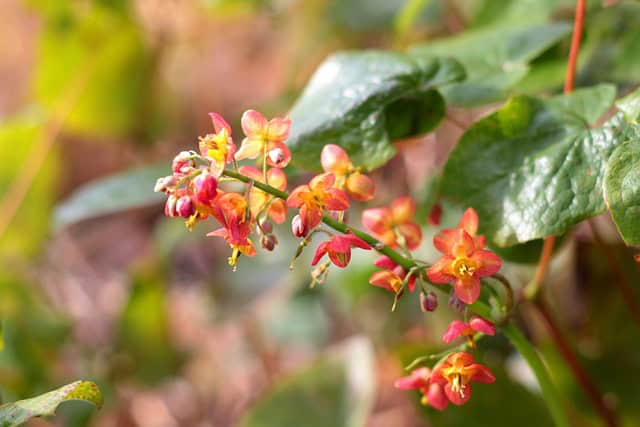
Lastly, epimedium (Epimedium spp.), often known as barrenwort, is a lovely addition to any shade garden. With beautifully heart-shaped leaves and delicate flowers on slender scapes, epimedium creates a delicate, lush underlayer in your garden.
Epimedium is known for its ability to thrive in poor soil and dappled shade, making it quite versatile. This perennial is largely avoided by deer due to its dense foliage and mild toxicity.
Caring for epimedium is simple; maintain moisture during its growing season. The delicate flowers serve as a wonderful complement to larger perennials, while the foliage provides an attractive backdrop throughout the year.


